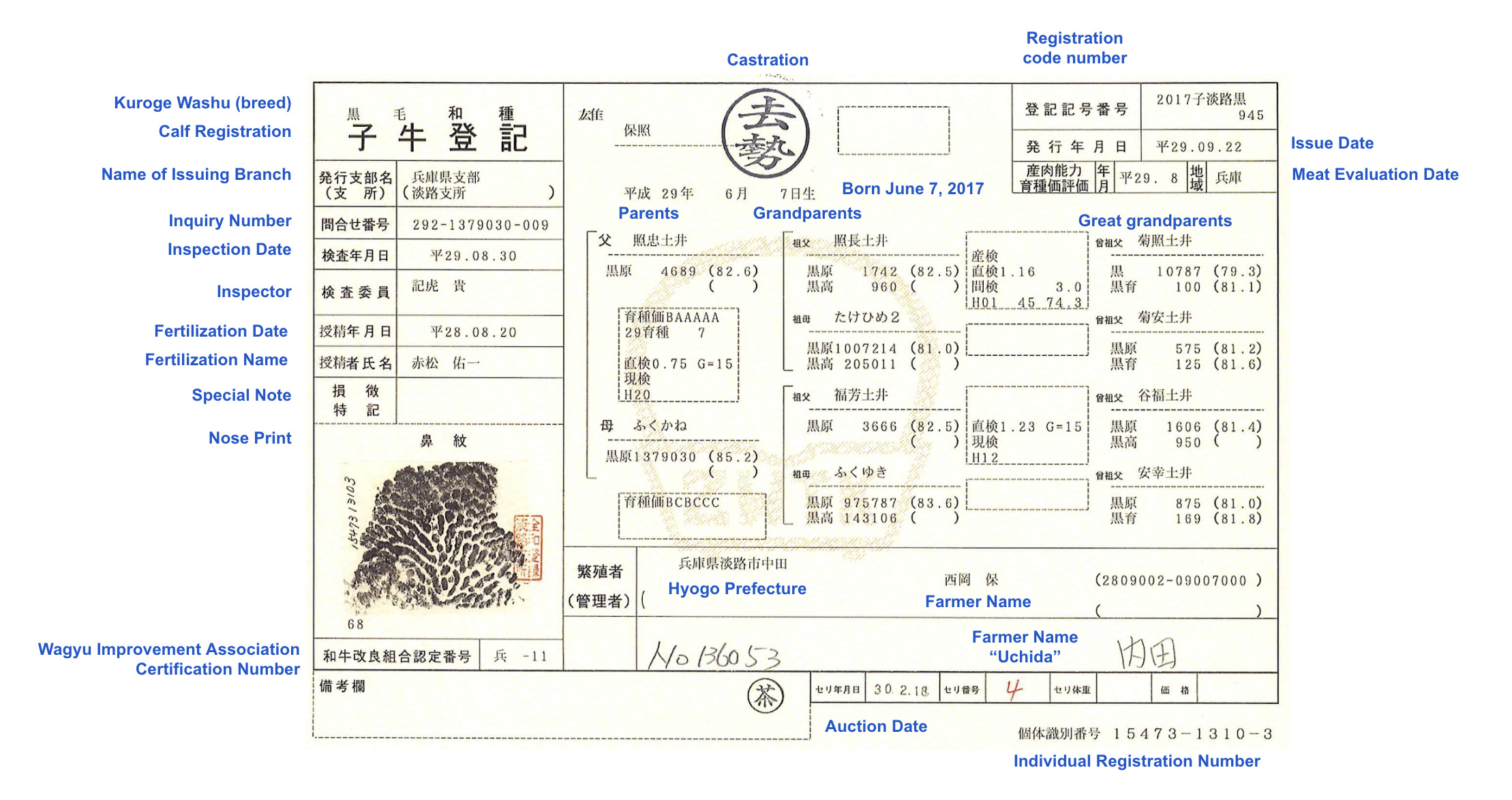Besides the incredible marbling and exquisite flavor profile, another thing to admire about Japanese Wagyu is the system of 100% traceability for every animal. The nose print certificates, which track every animal's lineage, place of birth and other details, are the carefully-managed centerpiece of this system.
Starting in July of this year, we are offering Kobe Beef, and for the lucky few who are able to score some of this rare Wagyu, we are including an official copy of one of the nose print certificates from the very Kobe Beef cattle we purchased for this product's launch.
Below is a photograph of a nose print certificate with annotations in English to help you understand what is written on them.

Some notes:
- The cattle breed, Kuroge Washu, is famous for its genetic ability to produce fine-grained, intramuscular marbling
- In the lower middle of the certificate, you can see the farm's location, Hyogo Prefecture (兵庫県). To qualify as Kobe Beef, the animal must be born, raised and harvested in Hyogo, the prefecture where Kobe city is located.
- The animal's birthdate is towards the top. The year is written as "平成29年" or "Heisei 29". In Japan, years are marked according to eras associated with the Emperors. "Heisei" refers to the period of Japanese history corresponding to the reign of Emperor Akihito from 8 January 1989 until his abdication on 30 April 2019. Heisei 29 is equal to 2017 on the Western Calendar. "6月" is "6 month" or June.
- Each animal has a unique identification number, which can be looked up on a Japanese government website (here) — provided that your keyboard can type in "half-width" numbers, that is. See below for an animation of the cattle from this certificate being looked up.
